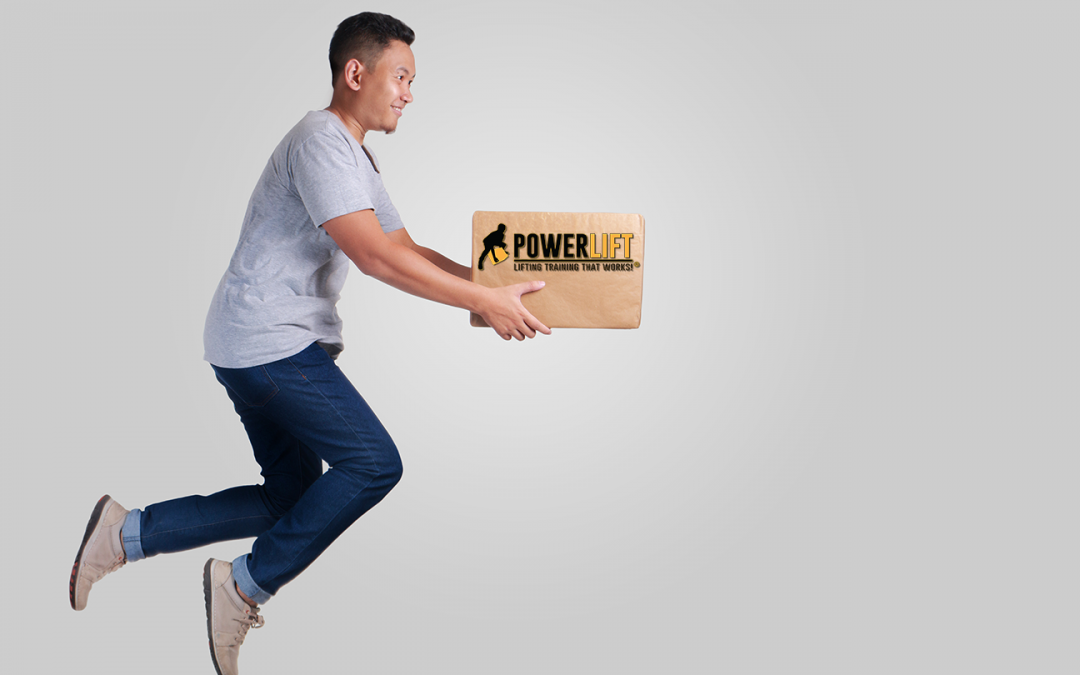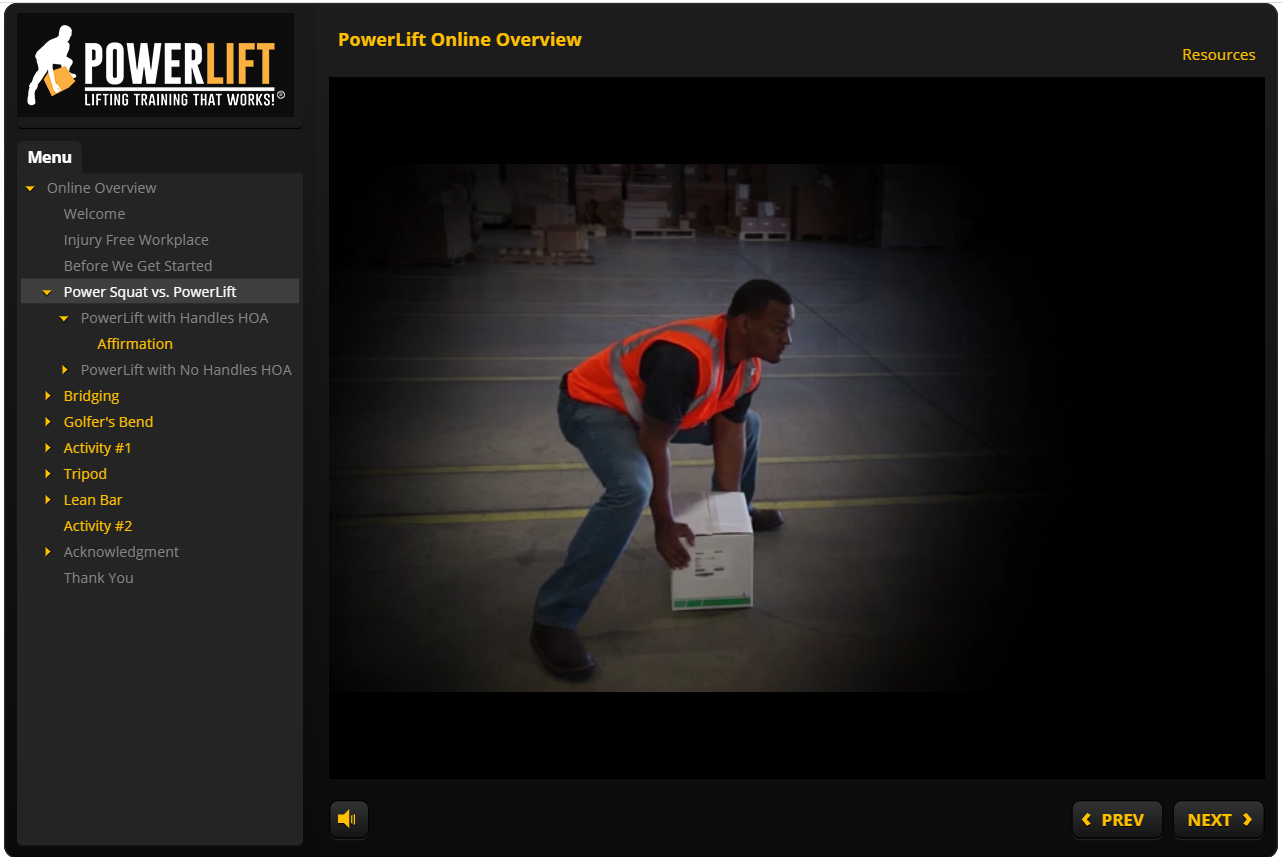Levitation may one day be a thing.
Maybe. And you can probably guess that we’re not holding our collective breath in anticipation.
Levitation is silly (at least it is for now.) So the next best thing has got to be safe lifting and material handling techniques. But there are so many ways to interpret ‘safe lifting and material handling’ that it’s difficult to figure out where to start looking. So instead of trying to untangle the confusion, we are going to present a method that simply works.
It’s called PowerLift®.
It works for a number of reasons. And one of those is that PowerLift® isn’t merely an ‘information download’ that employees and workers learn in the classroom and then forget.
Ever heard the saying old habits die hard? Well they do. Chalk it up to conditioning, but old behaviors do tend to stick around. Stubbornly. PowerLift® works because it displaces old behaviors with behaviors that are both safe and effective. More bluntly, PowerLift® helps you – and your workers and employees – replace bad lifting habits with good ones.
The proof is in the pudding. Over a year, and across 14 USPS locations that were studied, the average reduction in lifting and material handling injuries was 69%, with some locations reporting a reduction of 100%, essentially eliminating lifting injuries. And what was it that made the difference?
We can tell you with pride and great confidence that it wasn’t levitation. In those locations, the USPS introduced the PowerLift® training, and took on instilling a new set of habits in their employees.
So what makes PowerLift® so effective?
1. It’s a lifting method that actually works.
PowerLift® uses the natural movements and structure of the body to empower the lift. It employs a wide stance, with the feet positioned more than shoulder width apart. The body is no longer behind the load, but, where possible, over it. This greatly improves stability, and keeps the back out of the actual lift itself. Since physical power, that was once diverted for balance and stability, is now available for the lift itself, fatigue is reduced significantly. A further bonus is that this technique is much friendlier to the knees, since they are not bent in a squatting position. The PowerLift® stance alone is especially welcome news to members of the workforce who are either older or overweight, or both.
2. The bulk of PowerLift® training takes place on the job.
Much less than half of the training takes place in a classroom. The classroom training takes approximately a half day, during which a Certified Master PowerLift® Trainer comes to your location and teaches the basic PowerLift® techniques. Trainees also learn various training techniques: a knowledge and information set that becomes vital to the effectiveness of the program.
The remainder of the training takes place on the job. PowerLift® trainees practice their newly-learned lifting methods where they will need those techniques the most: right where they do their work. Classroom knowledge becomes practical application in a relatively short time, and trainees can actually experience the difference between old and new behaviors. Instructors and trainees work together to solve the real-life material handling challenges that are faced on a daily basis. The solutions are relevant, practical and effective, and adoption of the new methods and techniques is rapid.
This initial wave of trainees become your peer-coaches and peer-trainers, bringing the power of the PowerLift® Training to the individual workers who form part of the backbone of the organization. It’s called ‘train-the-trainer,’ and is integral to the PowerLift® system.
3. The Training is Ongoing
PowerLift® training is not a one-and-done training. One of the features of PowerLift® is the library of more than 1,200 single-page, fully illustrated guides that cover hundreds of activities, customized to your industry, and can even be further customized for your company. Weekly safety-talks bring training ‘refreshers’ to specific teams of people. Challenges that may be unique to specific tasks, or even those faced by specific individuals can be discussed and resolved during these safety-talks. The result is a team of employees that cares for their safety and the safety of those around them.
A surprising result of PowerLift® training is that the training is not limited to the workplace. A load is a load after all, whether it’s a box of inventory, or a bag of groceries. People who have received the PowerLift® training also report that they’ve benefited from the training outside of work. In one instance, an employee taught her mother – who’d had a severe back injury – to lift using some of the techniques presented by PowerLift®. The employee’s mother learned the techniques and was able to lift her young grandchild for the first time.
As if that wasn’t enough, we augmented PowerLift® with technology!
Modjoul™ is a wearable device that can sense when a wearer is stretching, bending, reaching, or over-exerting themselves. The device can also pick up temperature, and other environmental conditions. Modjoul™ will detect when the wearer is walking, running, or even tripping and falling. All the information is collected, stored and analyzed, then compiled into customized reports that can help determine the needs of each individual worker. When the wearer is in danger of injuring themselves, the device warns them via haptic feedback, helping to prevent injuries before they happen. A new version of Modjoul™’s wearable can also help with social distancing and contact tracing, a vital component during the Covid-19 pandemic.
Ving! is a robust platform that delivers bite-sized training (a ‘Microburst’) to an individual’s mobile device on demand. No username or password is required, and can be triggered in a number of different ways, such as QR codes. For instance, employees who are engaging in poor lifting habits may trigger a training, and receive the correction in the moment. This serves 2 distinct functions: it saves the employee from injury, and it delivers and reinforces trainings that correct the behavior for the long term.
We can’t teach you levitation. But we can help you reduce workplace injury.
It’s up to you to let us know how. If you’d like to review case studies, and learn more about PowerLift® and our partners, please visit our website: https://powerlifttraining.com/
We’d love to work with you. Together, we can help keep your employees safe, especially as workforces are diminished and impacted by the ongoing SARS-Cov-2 pandemic.




Recent Comments